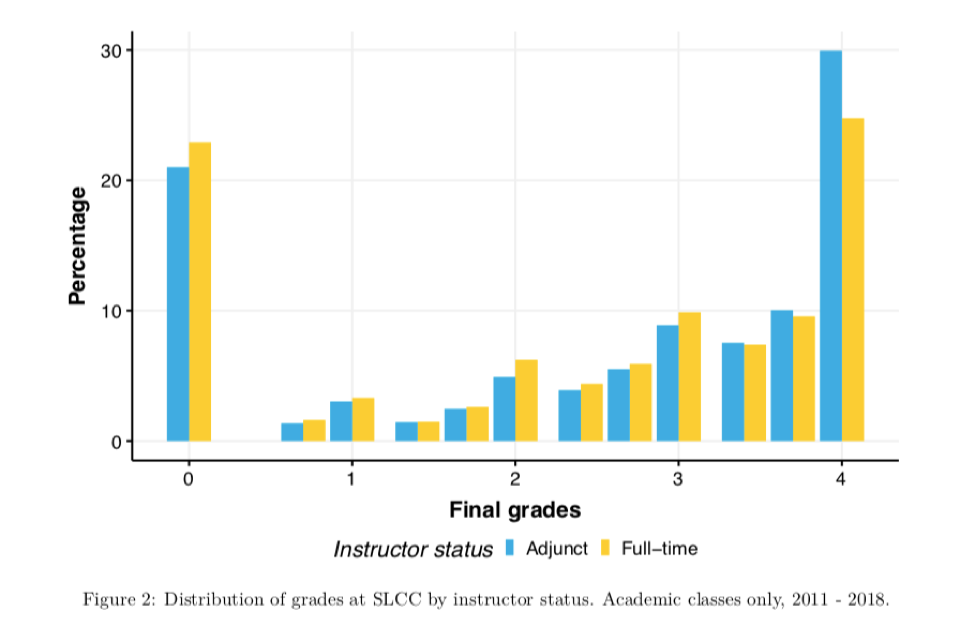Adjunct Instruction
Prepared by Jeff Webb
October 8, 2018
Abstract
In 1969 part-time instructors (adjuncts) made up 27% of the total faculty in US community colleges; in 1989 the number had climbed to 52% and was approaching 70% by 2003. Such heavy reliance on adjunct teaching naturally prompts a question: Does instruction by adjunct faculty influence student performance differently than instruction by full-time faculty? This study investigated the scope and associated outcomes of adjunct teaching at Salt Lake Community College (SLCC). The main findings of the study included the following:
- Adjuncts made up about 80% of the academic faculty at SLCC and taught about 62% of FTE in each academic year.
- Adjuncts awarded modestly higher grades, even after adjusting for a variety of other factors in a statistical model. But the average grade difference varied strongly by course, with some of the larger courses showing little difference. This may point to a lack of shared grading standards between adjuncts and full-time instructors in some departments and courses.
- Students who took courses from adjuncts were no less likely to persist into the next semester or to graduate.
- Student performance in a subsequent course was no different for students who took the first course from an adjunct instructor compared to those who took the first course from a full-time instructor. The two course sequences examined were English 1010 to English 2010 and Math 1010 to Math 1050. However, while the persistence of students to a higher English course was not associated with instructor employment status in English, in Math it was: students who took Math 1010 from adjunct instructors were more likely to repeat Math 1010 or not continue on to complete the QL requirement.
- A survey of adjunct instructors conducted by the School of Arts Communication and Media found that two of the most commonly identified self-reported challenges to delivering effective instruction at SLCC were last-minute scheduling changes and lack of prep time, and poor communication from administration.

